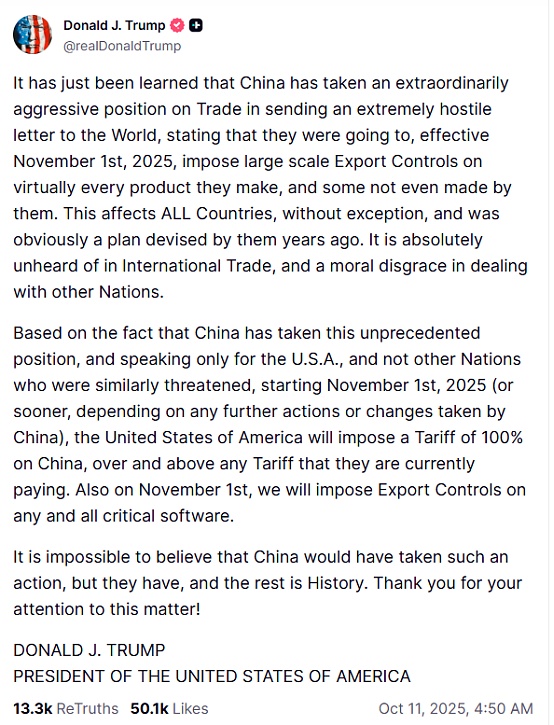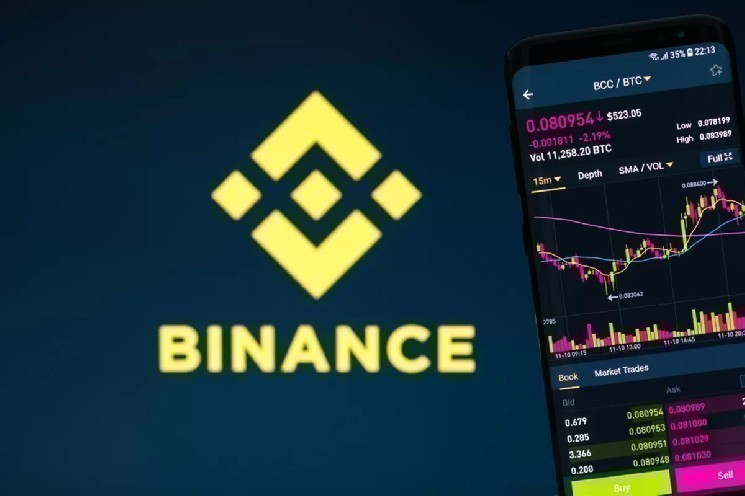October 11th is a day that will go down in crypto history. On that day, over 1.6 million people were wiped out in the crypto market, $19.3 billion in positions were liquidated, Bitcoin plummeted 13%, Ethereum plummeted 17%, and the altcoin sector plummeted 85%, with several smaller cryptocurrencies plummeting to zero. It was a doomsday market littered with casualties. Yet, during the recent National Day holiday, Bitcoin had just hit a new high of $126,200, and Binance Coin (BNB) was heading towards $1,300, demonstrating a thriving crypto market.
To sum it up in one sentence, the tight liquidity, macro-level emergencies, and the high leverage characteristics of the industry intertwined and eventually led to a catastrophe, and the exchange was one of the important driving forces behind it.

The crypto market was particularly hard hit. BTC flash-crashed to $101,500, ETH dropped to $3,373, and small-cap Altcoin plummeted by over 90%. Liquidations across the entire network exceeded $20 billion, sending the market into extreme panic.
Following the incident, two types of cryptocurrencies have been the subject of much discussion. The first is the collateralized W-series. On the day of the incident, the liquidity of WBTC, WBETH, and WBSOL on Binance plummeted, with WBTC plummeting to as low as $35,000, WBETH to $430.65, and WBSOL even falling below $ 35 . The second is the depegging of the stablecoin USDe, which plummeted from $0.99 to $0.62 on Binance, sparking widespread market discussion of it as the "second generation of LUNA."
It's worth noting that while WBETH is generated by staking the original token, the depth of liquidity is clearly not comparable. When ETH plummeted, WBETH, as collateral, was the first to be devalued. During liquidation, the platform automatically sold WBETH, creating a vicious cycle with no liquidity. WBETH plummeted from over $4,000 to $430, effectively wiped out the vast majority of holders.
But high profits always come with high risks. A rapid market decline forced arbitrageurs' revolving loan positions to be liquidated, leading to a sell-off of spot and USDe . Oracles lowered collateral valuations, triggering a massive forced liquidation, ultimately wiping out $19.3 billion in liquidity . This scenario is familiar in the crypto market. Prior to USDe , the algorithmic stablecoin UST had already demonstrated the devastating effects of revolving loans in extreme market conditions.
The prevalence of conspiracy theories isn't groundless. Thirty minutes before Trump's speech, which triggered the recent sell-off, a major Bitcoin whale short 6,189 BTC with 10x leverage, valued at approximately $752.9 million, and short 81,203 ETH with 12x leverage, valued at approximately $353.1 million. This $1.1 billion short position generated a profit of $190 million within 24 hours. Chainalysis researchers believe the whale is Garrett Jin, the former Chinese CEO of BitForex. Chainalysis researcher ZachXBT posted, "Garrett Jin appears to have begun collaborating with a Chinese whale who previously had tens of millions of dollars in dormant funds on the blockchain until recently. " Garrett's latest response stated that the funds belonged to his own clients and that he had no connection to the Trump family or Donald Trump Jr., clarifying that this was not insider trading.
The turnaround came quickly. Just this morning, Trump issued another reassuring statement, stating, "Don't worry about China. Everything will be fine. The United States wants to help China, not hurt China." This statement successfully restored market confidence. This statement sparked a collective market bet on the "TACO" trade, an abbreviation for "Trump Always Chickens Out," which directly points to Trump's superficial strength and insufficiency. The trading strategy involves betting that when Trump's tariff threats cause the market to fall, investors will eventually back down, leading to a stock market rebound and profiting by buying on the dip.
Affected by this, crypto assets rebounded rapidly, Bitcoin returned to above $115,000, ETH once broke through $4,200 and is now at $4,186. BNB has seen an even more gratifying rise, rising by more than 15% to a new high of $1,351.
Judging by official responses both domestically and internationally, the tariff crisis is likely another macroeconomic event with much ado about nothing. But behind this incident, who can the retail investors whose positions were liquidated seek justice, and how can the pain left behind be healed? Ultimately, it seems only a bloody lesson remains.







